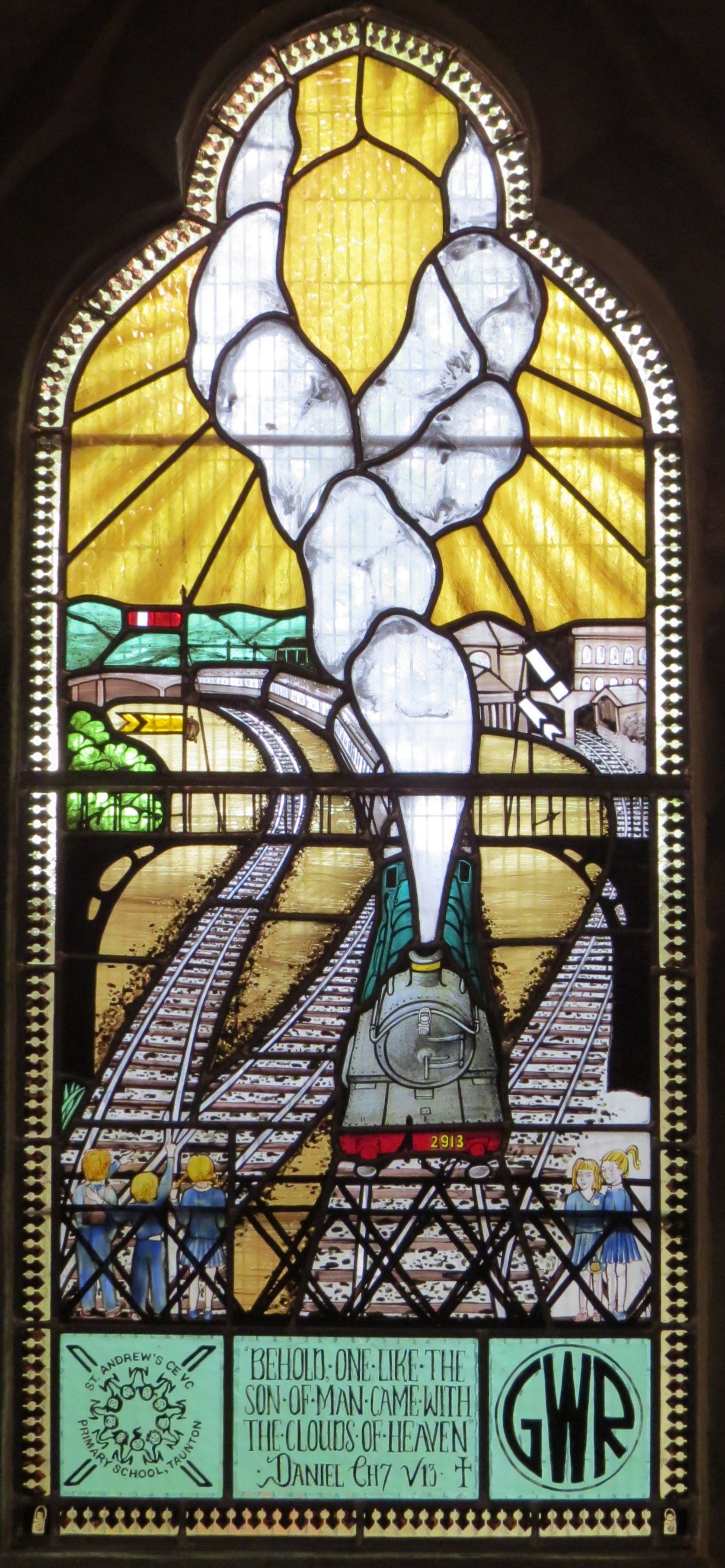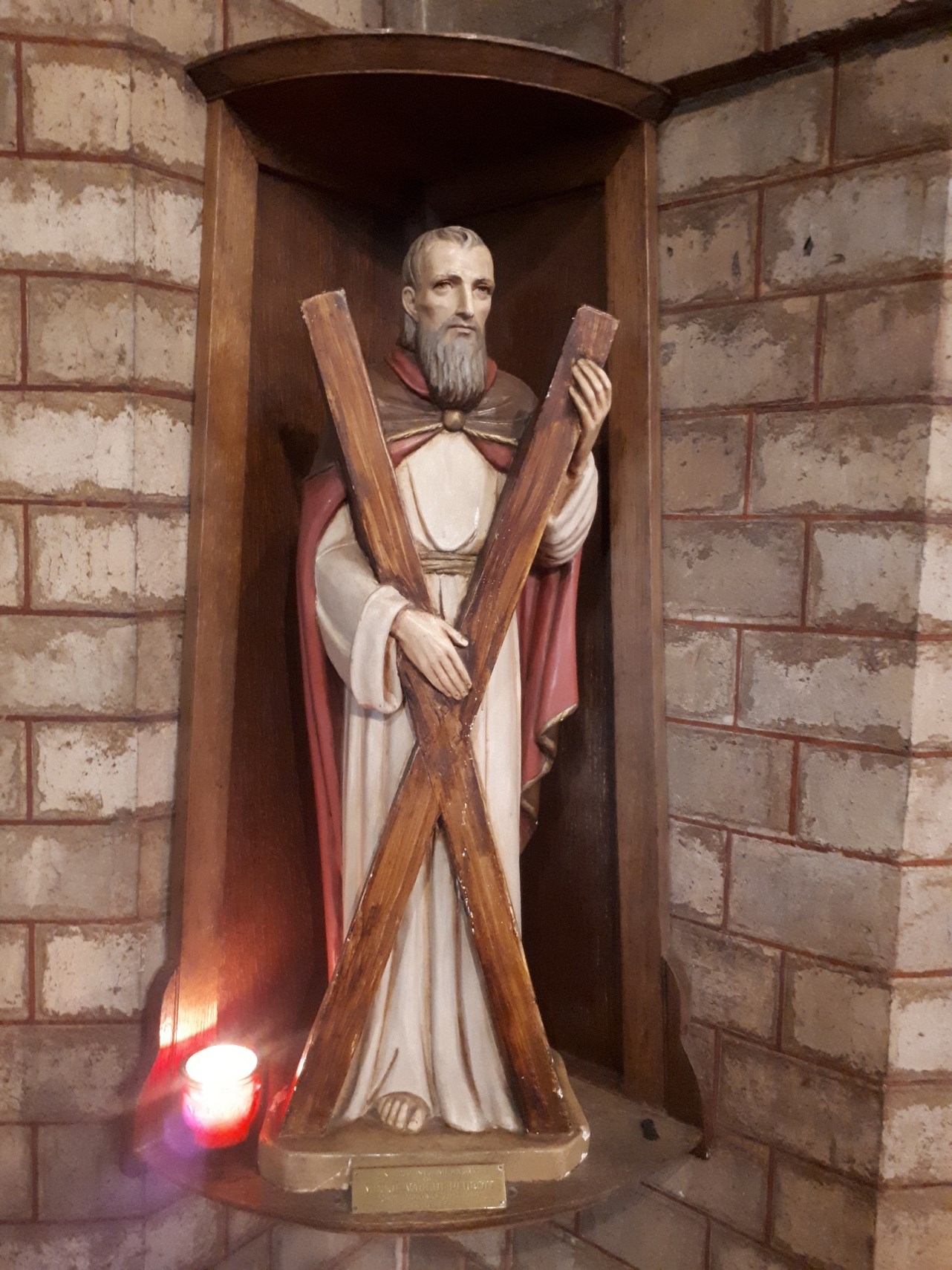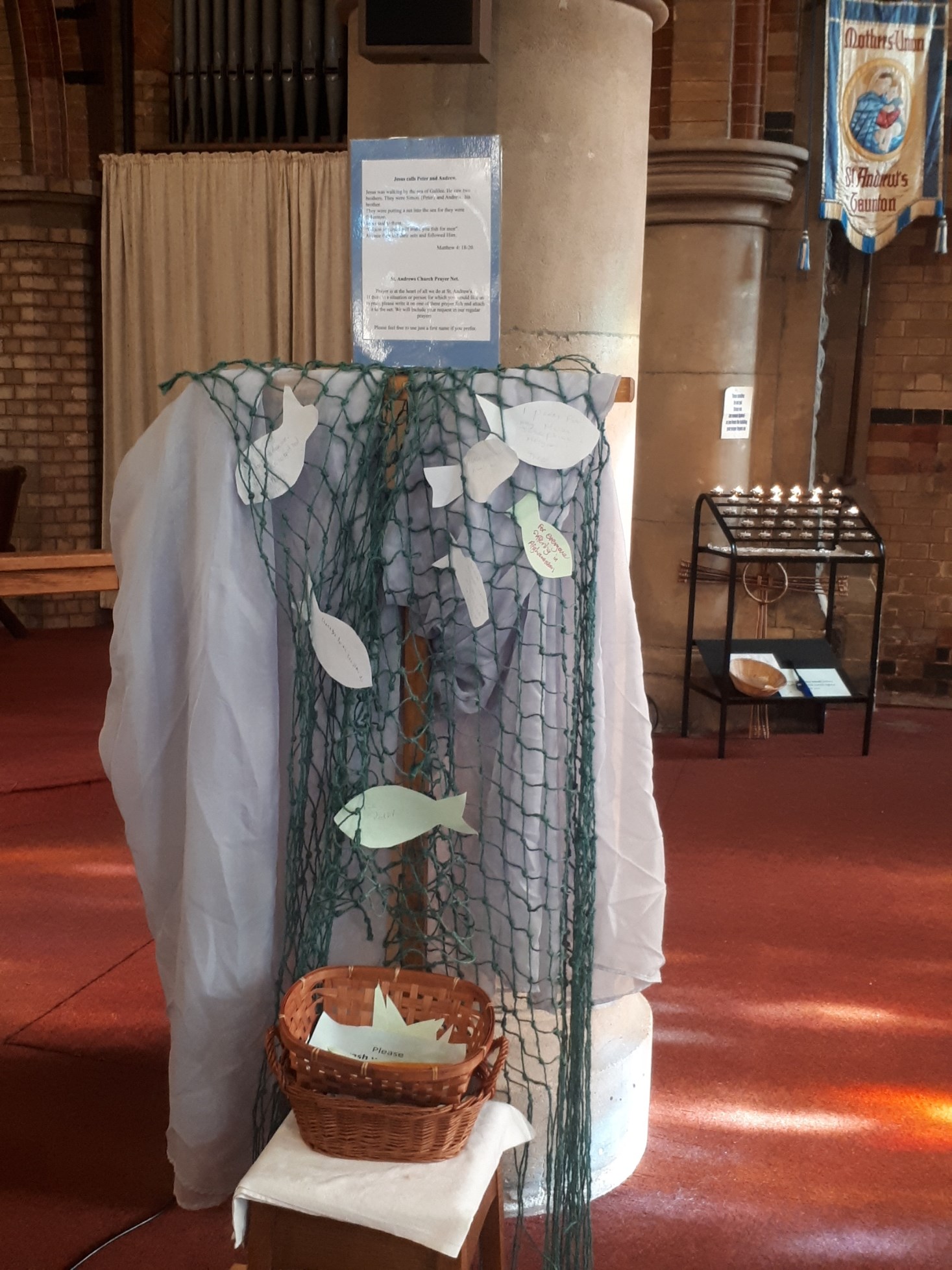History

St. Andrew's Church was consecrated on 14 July 1881 through the generosity of the Revd. Frederick Jeremiah Smith the first Vicar of Holy Trinity Church in Taunton. His gift towards building a new parish church was announced in a sermon given at the new St. John's Church on 14 August 1878. It was made as a gesture of thanksgiving "that the country had been spared the horrors of war" following the Treaty of Berlin between Russia and Turkey.
St. Andrew's was built to serve the rapidly expanding area of Taunton which served the newly arrived Great Western Railway, and soon became known as "The Railway Parish".
When the church was first built it comprised a nave and 2 side aisles and seated 500.
In 1893 the original south aisle was removed and a new larger south aisle was added, together with the Lady Chapel beyond (the north aisle was retained).
The High Altar was also extended.
The additional 200 - 300 seats were needed to accommodate the rapidly increasing congregation who could no longer be comfortably seated.
The church was re-dedicated in 1893, only 11 years after it first opened.
The Railway Parish
St. Andrew's was built to serve the rapidly expanding area of Taunton which served the newly arrived Great Western Railway, and soon became known as "The Railway Parish". Our 'Railway Window' (see photo above) which was produced by local artist Clare Maryan Green and dedicated by The Right Reverend Peter Price, Bishop of Bath and Wells on 22nd December 2002.
War Memorial
St Andrews Church has an oak screen extending across the entire width of the chancel with eight narrow upright columns surmounted by a canopy with pierced decoration. Above the canopy at the centre is a cross with Christ crucified and with a supporting figure on each side. At the base are eight solid panels, the two at the centre hinged to provide access to the sanctuary. At the top of the canopy and also above the solid panels is the dedication in raised letters in coloured gold. The names of the fallen from the Great War and the Second World War are painted white on all eight solid panels.
The link below gives further details of our War Memorial:
The link below gives information about the men recorded therein:
Who is St Andrew?
St Andrew is known as one of Jesus’s twelve disciples and as the patron saint of Scotland, among other countries.
Andrew was a ‘networker’ – both a fisherman and someone who connected people with Jesus.
The Gospels tells us that Andrew and his brother, Simon, who was later given the name Peter by Jesus, lived and worked in Galilee. Fishing, then as now, was hard work, but the Sea of Galilee (actually a big freshwater lake) was well known for its fishing and we can imagine Andrew and Simon were making a good living.
Yet Jesus calls them, saying ‘Follow me, and I will make you fish for people.’ And immediately they leave their nets and follow him. It’s a big step, which takes trust in Jesus.
John’s Gospel tells us the most about Andrew. There, we learn that he was first a disciple of John the Baptist, who taught that the Son of God was coming, and it was time to get ready for him.
Andrew was ready when he met Jesus. John’s Gospel pictures Andrew as the first of Jesus’ disciples – in the Orthodox tradition, he is known as ‘The First-Called.’ Andrew then goes to get his brother Simon, telling him, ‘We have found the Messiah,’ and brings him to Jesus.
Andrew was part of key moments in Jesus’ life and ministry – such as when Andrew brings the boy with five loaves and two fish to Jesus, leading to the feeding of the 5,000.
Ancient historians record Andrew travelling extensively and spreading the Good News of Jesus – not to Scotland, but through the ancient areas of Thrace and Scythia, and through Ukraine, Romania and Russia, countries where he is also a patron saint.
Greece has also made St Andrew one of its patrons. Andrew is said to have been martyred by crucifixion in AD60 in Patras, today the third largest city in Greece. According to tradition, he died on an X-shaped cross at his own request, because he did not consider himself worthy to be crucified in the same way as Jesus. The X has become his symbol.
At St Andrew’s Church, we have a Eucharist service for St Andrew’s Day, 30th November, or occasionally on the Sunday closest to it. We draw inspiration from St Andrew and seek to follow in his footsteps by putting our faith in Jesus, and bringing people to him.

